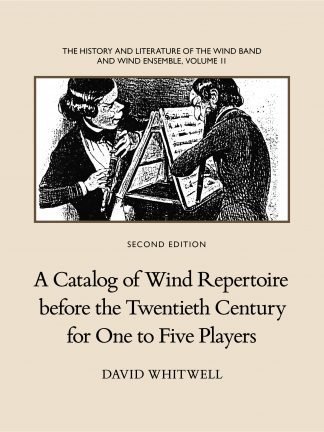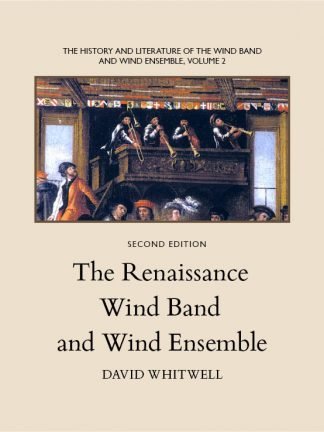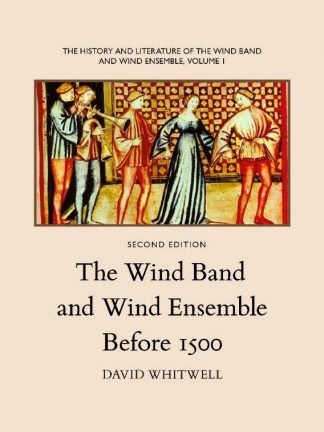Description
The History and Literature of the Wind Band and Wind Ensemble, volume 1
One of the most amazing accomplishments of contemporary music publication. — Wolfgang Suppan, Internationale Gesellschaft zur Erforschung und Forderung der Blasmusik, Mitteilungsblatt, Nr. 15, Marz, 1985.
This History and Literature of the Wind Band and Wind Ensemble will remain for a long time the principal source for the ultimate study of the literature of wind instruments. — Giovanni Ligasacchi, “Quattro Secoli di Storia La Letteratura degli Stromenti a Fiato,” Brescia Musica (Italy), Anno V, n. 21, Febbraio, 1990.
The Wind Band and Wind Ensemble Before 1500 is the first volume in Dr. David Whitwell’s ground breaking thirteen volume History and Literature of the Wind Band and Wind Ensemble series. Whitwell’s meticulous scholarship reveals the continuous history of the wind ensemble, from its earliest roots to the nineteenth century — an unbroken tradition of wind music that music scholars have never been fully able to appreciate until now. This volume includes:
- court wind music developing form crude ceremonial instruments into the real wind bands of the fifteenth century
- the ancient tradition of civic wind music, centering on ‘watch’ duty and the gradual development of more aesthetic functions including real concerts
- the complete prohibition of wind music in the early Christian church and its gradual acceptance into the service through the medieval church drama and the bands that accompanied nobles in their private church ceremonies.
Updated with the inclusion of relevant iconography, this second edition belongs in music libraries and conservatoires around the world.
All earlier efforts stand in the shade of this undertaking … Whitwell’s great undertaking presents not only an abundance of new material, which belongs to the literature of anyone interested in wind music but also creates a new dimension for discussion by musicologists. One can not thank Whitwell enough. — Wolfgang Suppan, Oesterreichische Blasmusik, Nr. 5, 1983.
The book is well-documented, quite inclusive and pleasantly readable. — Music Educators Journal, December, 1982
The text is logically arranged and copiously documented (934 footnotes!). Numerous citations from period literature are included in the original languages and are provided with direct translations or paraphrases … This volume is a valuable reference work, bringing much otherwise scattered information under one cover. — Margaret Downie, Newsletter of the American Musical Instrument Society, Vol. XII, Nr. 1, February, 1983
The aim of this voluminous and unique work is fantastic … We are able to make no corrections, but only congratulate the author for this very profound study, especially when we read the many footnotes. With great interest we look forward to the second volume of this magnificent work. — LVK, Fedekamnieuws, Tweemaandelijks, 28e Jaargang Nr. 6 – December, 1983.
The book is full of interesting information. Certainly this book is a must for those interested in the early history of wind music. — Jay Fry, The Instrumentalist, October, 1984.





